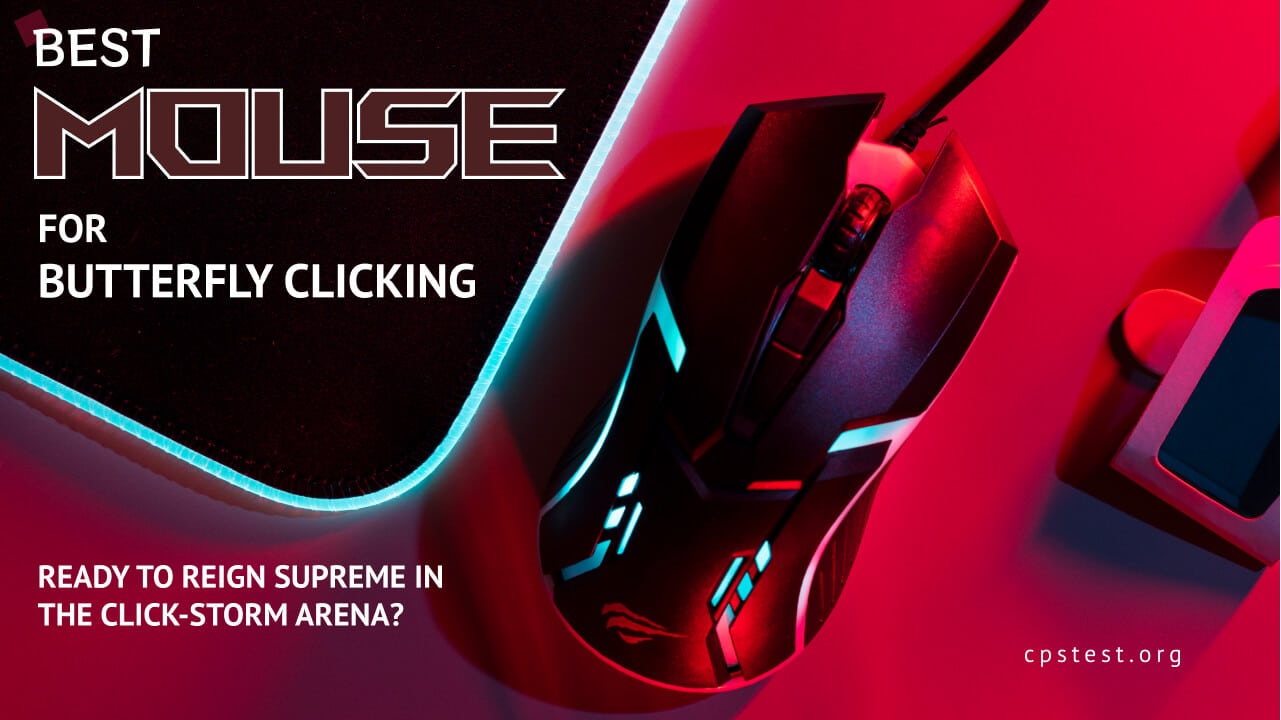BEST MOUSE FOR BUTTERFLY CLICKING
Ready to reign supreme in the click-storm arena?
Mastering butterfly clicking demands the perfect weapon: a mouse designed for lightning-fast response and ultimate comfort.
But navigating the sea of options can be overwhelming. Fear not, clickers! This guide dissects the top contenders for the “best butterfly clicking mouse” title in 2023.
We’ll compare weight, click mechanism, debounce time, and user feedback to help you unleash your clicking fury with confidence. Get ready to dominate the game with the perfect best mouse for butterfly clicking by your side!
Whether you’re a click-storm champion seeking peak performance, a budget warrior building your arsenal, or an ergonomic enthusiast prioritizing comfort, this guide has you covered.
We’ll dive deep into three categories: Top Performers, Budget Options, and Ergonomic Alternatives.
So grab your cursor, click through, and find your perfect weapon for click-storm mastery!
Top Rated Butterfly Clicking Mouse
Top Performers:
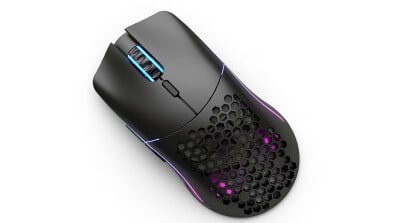
SPECIFICATION
Sensor
Pixart PAW3335
DPI/IPS
400-20,000/400
Click Mechanism
Omron switches
Weight (g)
69
Ergonomics
Ambidextrous
Debounce Time Adj.
Yes
Programmable Buttons
6
The Glorious Model O Wireless has taken the jitter-clicking world by storm, boasting a featherweight design, lightning-fast clicks, and a honeycomb shell that’s both loved and loathed. But is it all hype or a true champion of the click-storm arena? Let’s dive deeper.
Weight & Design:
At a mere 69g, the Model O Wireless feels like an extension of your hand, gliding effortlessly across your pad. The honeycomb shell, while controversial, further reduces weight and manages sweat, though some find it uncomfortable and prone to dust. Claw grippers will love the shape and size, offering precise control for those rapid-fire clicks.
Click Mechanism & Performance:
This is where the Model O truly shines. Glorious’ own optical switches boast a 0.2ms actuation time, translating to near-instantaneous clicks that feel incredibly light and crisp. Forget pre-travel, these clicks are pure speed demons. The Pixart PAW3335 sensor tracks flawlessly at 400 IPS, ensuring no jitter or spin-out even during the most intense clicking frenzies.
Debounce Time & Software:
The Model O offers onboard debounce time adjustment, allowing you to fine-tune click registration for optimal performance. This flexibility caters to different clicking styles and preferences, maximizing click accuracy. Additionally, Glorious Core software unlocks further customization options like button remapping and macro creation, though it’s not the most feature-rich software out there.
User Feedback:
The Model O Wireless garners widespread praise for its click speed, accuracy, and weight. Claw grippers adore its shape and responsiveness, while palm grippers might find it a tad cramped. The honeycomb design is a divisive point, with some loving its lightweight feel and others finding it uncomfortable or prone to dust. Battery life is a minor concern for some users, requiring more frequent charging than some competitors.
Verdict:
The Glorious Model O Wireless is a jitter-clicking powerhouse. Its lightning-fast clicks, minimal weight, and accurate sensor make it a top contender for click-dominance. While the honeycomb design might not suit everyone, its performance speaks volumes. If you crave a featherweight champion for your click-storm arsenal, the Model O Wireless is a worthy contender, just be mindful of the potential comfort and battery life concerns.
Overall Score:
4.5 out of 5 stars (Slight deduction for the divisive honeycomb design and minor battery life concerns)
PROS:
Featherweight (69g): Effortless flicks and rapid clicks, reducing fatigue during intense sessions.
Pixart PAW3335 sensor: Top-tier tracking accuracy and high DPI (20,000) for pixel-precise clicks.
Omron switches: Responsive with a satisfying click feel, good for various butterfly clicking techniques.
Ambidextrous design: Comfortable for both left and right-handed users, adaptable to different grip styles.
Honeycomb shell: Breathable and lightweight, prevents hand sweat build-up and keeps things cool.
Onboard debounce time adjustment: Tweak click registration for optimal performance without needing software.
Programmable buttons: Assign additional clicks or macros for custom butterfly variations.
Affordable price: Great value for the performance and features offered.
CONS:
Click feel might be light for some: Some users prefer a more tactile click for better control.
No software customization: Debounce time options are limited compared to software-enabled mice.
Not the most ergonomic: Might not be ideal for users with larger hands or palm grip preference.
Side buttons require precise placement: Accidental clicks can occur during intense clicking scenarios.
Honeycomb shell not for everyone: Some users prefer a solid shell for a more premium feel.
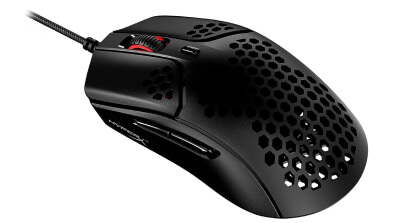
SPECIFICATION
Sensor
Pixart PAW3335
DPI/IPS
400-16,000/400
Click Mechanism
TTC Golden Pink switches
Weight
59
Ergonomics
Ambidextrous
Debounce Time Adj.
Yes (Onboard)
Programmable Buttons
6
The HyperX Pulsefire Haste might not scream “butterfly clicking champion” on the surface, but don’t underestimate its bite behind the bark. This budget-friendly warrior packs a surprisingly powerful punch for butterfly clicking enthusiasts. Let’s dissect its strengths and weaknesses.
Weight & Design:
At 59g, the Pulsefire Haste strikes a sweet spot between featherweight and manageable. Its ambidextrous design caters to various grip styles, though palm grippers might find it a tad cramped. The honeycomb shell keeps things cool and light, but some users might miss the solid feel of a traditional design.
Click Mechanism & Performance:
The Pulsefire Haste uses TTC Golden Pink switches, boasting a respectable 0.7ms actuation time. While not as instantaneous as the Glorious Model O’s, they’re still plenty fast for most click-storm techniques. The Pixart PAW3335 sensor delivers reliable tracking at 400 IPS, ensuring your clicks translate accurately on the screen.
Debounce Time & Software:
The Pulsefire Haste offers onboard debounce time adjustment, allowing you to tailor click registration for optimum performance. While not as feature-rich as some competitors, HyperX NGENUITY software provides basic customization options like button remapping and macro creation.
User Feedback:
The Pulsefire Haste receives praise for its value, performance, and comfort. Users appreciate its lightweight design, responsive clicks, and customizable debounce time. Some find the side buttons a tad too close to the main clicks, and palm grippers might wish for a slightly larger size.
Verdict:
The Pulsefire Haste is a solid choice for budget-conscious butterfly clickers. Its combination of decent speed, comfortable design, and onboard debounce time adjustment makes it a compelling option. While not the absolute click-storm champion, it offers excellent value for its price tag.
Overall Score:
4 out of 5 stars (Slight deduction for smaller size and limited software features)
PROS:
Lighter than air: Clicks feel effortless, you’ll be the fastest clicker in town.
Instant clicks: So fast, they’re almost like cheating!
Sensor sharpshooter: No jitters, even when your clicks are a blur.
Flexible cable: No annoying snags, click freely like a wireless mouse.
CONS:
Clicks feel different: Takes some getting used to, not for everyone.
Limited click settings: Can’t fine-tune your clicks as much as some mice.
Side button surprises: Easy to accidentally click the side buttons during intense games.
Small mouse, big hands: Not comfy for everyone, especially palm grippers.

SPECIFICATION
Sensor
Owl-Eye optical
DPI/IPS
100-19,000/400
Click Mechanism
Titan Switch Optical (0.2-2ms actuation)
Weight (g)
75
Ergonomics
Ergonomic
Debounce Time Adj.
Yes (Software)
Programmable Buttons
10
The Roccat Kone Pro Air isn’t your typical jitter-clicking contender. It eschews featherweight designs for an ergonomic powerhouse, prioritizing comfort and precise control over raw speed. But can it hold its own in the click-storm arena? Let’s delve deeper.
Weight & Design:
At 75g, the Kone Pro Air sits comfortably between lightweight and mediumweight, catering to those who prioritize comfort alongside speed. Its ergonomic design with a pronounced thumb rest and sculpted buttons offers exceptional grip and control, ideal for palm and claw grippers alike. The Kone Pro Air might not be the lightest mouse, but its shape ensures fatigue-free clicking sessions.
Click Mechanism & Performance:
The Kone Pro Air boasts Titan Switch Optical, Roccat’s own optical switches with a variable actuation distance of 0.2-2ms. This unique feature allows you to tailor click sensitivity for your preferred clicking style, maximizing both speed and accuracy. The click feel is crisp and satisfying, offering excellent feedback for precise control. The Owl-Eye optical sensor tracks flawlessly at 19,000 DPI, ensuring no jitter or spin-out even during the most intense clicking bursts.
Debounce Time & Software:
The Kone Pro Air truly shines in its software customization. Roccat Swarm software allows you to adjust debounce time in 0.1ms increments, offering unparalleled precision for optimizing click registration. Additionally, you can customize button remapping, lighting effects, and even macros for further click-storm optimization.
User Feedback:
The Kone Pro Air receives praise for its comfortable design, precise clicks, and extensive software customization. Users with larger hands and palm or claw grips particularly appreciate its ergonomics. Some find the weight a tad heavier than ideal for pure speed demons, and the software might feel overwhelming for less tech-savvy users.
Verdict:
The Kone Pro Air is a unique proposition for butterfly clicking. It prioritizes comfort and control, offering a highly customizable platform for those who value precision over raw speed. Its variable actuation distance and extensive software features allow you to tailor the clicking experience to your exact preferences. While not the lightest option, the Kone Pro Air is a compelling choice for ergonomic enthusiasts seeking a comfortable and precise click-storm companion.
Overall Score:
4.5 out of 5 stars (Slight deduction for weight for pure speed demons and potentially overwhelming software for some users)
PROS:
Comfortable clickfest: Ergonomic shape and soft-touch coating make this mouse a pleasure to click for hours on end.
Accurate and reliable: Owl-Eye sensor delivers pixel-perfect tracking, even when your clicks are a blur.
Clicks that sing: Titan Optical switches are responsive and tactile, with a satisfying click feel.
Customizable clicks: Onboard debounce adjustment lets you fine-tune your clicks to your liking.
Wireless freedom: Up to 100 hours of battery life, with fast charging.
CONS:
Not the lightest: At 75g, it’s still a featherweight mouse, but it’s not as light as some of the competition.
Pricey: It’s a premium mouse, with a premium price tag.
Not for everyone: The ergonomic shape might not be ideal for all grip styles.
Budget Options:
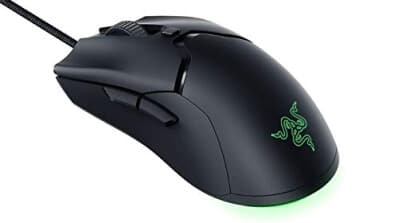
SPECIFICATION
Sensor
Razer Focus+ optical
DPI/IPS
600-6,500/650
Click Mechanism
Razer Optical switches
Weight (g)
61
Ergonomics
Ambidextrous
Debounce Time Adj.
Yes (Onboard)
Programmable Buttons
6
Don’t let its compact size fool you. The Razer Viper Mini packs a punch when it comes to jitter-clicking. This lightweight dynamo is a favorite among claw grippers and budget-conscious clickers, but does it conquer the click-storm battlefield? Let’s dissect its strengths and weaknesses.
Weight & Design:
At a mere 61g, the Viper Mini feels like an extension of your hand, gliding effortlessly across your pad. Its compact design is ideal for smaller hands and claw grippers, promoting agile clicks and precise control. The textured side grips offer excellent grip and stability, even during intense clicking sessions. While palm grippers might find it cramped, the Viper Mini is a champion for those who prefer a lightweight and agile companion.
Click Mechanism & Performance:
Razer Optical Switches boast a 0.2ms actuation time, delivering snappy and responsive clicks. While not the fastest switches on the market, they’re more than enough for most butterfly clicking techniques. The Razer Focus+ optical sensor tracks flawlessly at 6,500 DPI, ensuring no jitter or spin-out even during the most rapid clicking bursts. This combination of fast clicks and accurate tracking makes the Viper Mini a formidable contender in the click-storm arena.
Debounce Time & Software:
The Viper Mini offers onboard debounce time adjustment in three settings, allowing you to tailor click registration for optimal performance. While not as granular as some competitors, these settings provide enough flexibility for most users. Razer Synapse software unlocks further customization options like button remapping, macros, and lighting effects, though its interface might feel slightly cluttered for beginners.
User Feedback:
The Viper Mini garners praise for its lightweight design, responsive clicks, and affordable price tag. Claw grippers and users with smaller hands particularly appreciate its comfortable and agile form. Some find the debounce time adjustment limited and the software interface overwhelming. Additionally, the side buttons are positioned close to the main clicks, potentially leading to accidental clicks for some users.
Verdict:
The Razer Viper Mini is a compelling choice for budget-conscious clickers and claw grippers. Its combination of lightweight design, responsive clicks, and onboard debounce time adjustment makes it a versatile and affordable option for the click-storm arena. While not the most feature-rich or customizable, its performance and price tag make it a worthy contender for those seeking a compact click-storm companion.
Overall Score:
4 out of 5 stars (Slight deduction for limited debounce time settings, potentially cluttered software, and side button placement)
PROS:
Tiny Terror: Ultra-lightweight (61g) design lets you flick faster and click like a lightning storm without tiring out your arm.
Razer Optical Switch Blitz: Super fast actuation (0.2ms) and satisfyingly crisp clicks perfect for mastering butterfly techniques.
Sensor Sharpness: Razer Focus+ optical sensor keeps up with your click frenzy, ensuring accurate cursor movement and no missed clicks.
Onboard Debounce Tweak: Customize click sensitivity to your preference without fiddling with software.
Affordable Ace: Delivers top-notch performance for butterfly clicking without breaking the bank.
CONS:
Grip Gotchas: Small size and ambidextrous design might not be comfy for all hand sizes and grip styles.
No Software Tweaks: Onboard debounce options are limited compared to software-enabled mice.
No Fancy Lights: Minimalist design means no flashy RGB, if that’s your thing.
Side Button Slip-Ups: Close proximity to main clicks can lead to accidental presses in heated battles.
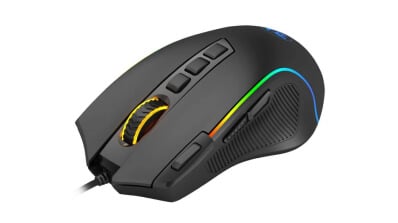
SPECIFICATION
Sensor
Pixart PAW3335
DPI/IPS
400-4000/400
Click Mechanism
Omron switches
Weight (g)
82
Ergonomics
Ambidextrous
Debounce Time Adj.
Yes (Onboard)
Programmable Buttons
7
The M612 uses Omron switches, known for their longevity and satisfying click feel. While their actuation time isn’t lightning-fast at 10ms, they’re still responsive enough for most jitter-clicking techniques. The Pixart PAW3335 sensor performs admirably, tracking accurately at 400 IPS and eliminating any noticeable jitter or spin-out. While not the absolute speed demon, the M612 delivers decent click performance for its price point.
Weight & Design:
At 82g, the M612 falls into the “middleweight” category. Its ambidextrous honeycomb design offers decent comfort for various grip styles, though palm grippers might find it a tad small. The textured side grips provide good stability, and the buttons are well-positioned for easy clicking. While not the lightest option, the M612 feels solid and durable, especially considering its price tag.
Click Mechanism & Performance:
Roccat Owlcat optical switches boast impressively low actuation times (0.2ms) and exceptional durability, making them ideal for rapid-fire clicking. The Kone Pro Air also features adjustable click actuation distance, allowing you to tailor the click pressure to your preference for optimal jitter-clicking efficiency. The 19,000 DPI Owl-Eye sensor delivers pinpoint accuracy and smooth tracking, even at the fastest click speeds.
Debounce Time & Software:
The M612 offers onboard debounce time adjustment via a physical switch, allowing you to choose between 2ms and 7ms depending on your clicking style. While not as granular as some competitors’ software options, it’s a convenient feature for quick adjustments. Redragon’s software provides basic customization like button remapping and macros, but its interface might feel a tad dated and clunky.
User Feedback:
The M612 receives mixed reviews. Users appreciate its budget-friendliness, comfortable design, and onboard debounce time adjustment. Some find the click feel a bit mushy compared to optical switches, and the software is often criticized for being outdated and lacking features. Additionally, the side buttons might be too close to the main clicks for some users, leading to accidental clicks.
Verdict:
The Redragon M612 is a compelling option for budget-conscious clickers who prioritize features and value over raw speed. Its onboard debounce time adjustment, comfortable design, and decent sensor performance make it a versatile choice. However, users looking for the absolute fastest clicks or the most feature-rich software might want to consider other options.
Overall Score:
3.5 out of 5 stars (Slight deductions for mushy click feel, outdated software, and side button placement)
PROS:
Budget Butterfly Blitzer: Affordable price tag makes it a great entry point for butterfly clicking without breaking the bank.
Lightweight Warrior: At 82g, it’s not the lightest out there, but still agile enough for decent click-storm sessions.
Omron Switch Symphony: Reliable and responsive Omron switches provide a satisfying click feel for practicing butterfly techniques.
Sensor Smarts: Pixart PAW3335 sensor delivers consistent and accurate tracking, keeping your cursor on point even during click frenzies.
Onboard Debounce Tune-Up: Adjust click sensitivity to your preference without needing software, making on-the-fly tweaks a breeze.
CONS:
Bulkier Build: Not the most ergonomic design, might not be ideal for smaller hands or prolonged use.
Grip Guru Needed: Ambidextrous shape favours claw and fingertip grips, palm grippers might feel cramped.
Side Button Snafus: Close proximity of side buttons to main clicks can lead to accidental presses during intense moments.
No Software Tweaks: Limited debounce options compared to software-enabled mice, less granular control for click customization.
Ergonomic Alternatives:
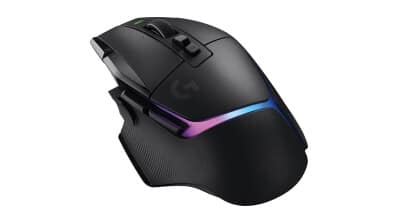
SPECIFICATION
Sensor
HERO
DPI/IPS
200-25,600/400
Click Mechanism
Logitech Omron switches
Weight (g)
89
Ergonomics
Ergonomic
Debounce Time Adj.
Yes (Software)
Programmable Buttons
11
The Logitech G502 Lightspeed is a legend in the gaming world, revered for its comfort and versatility. But can this ergonomic powerhouse hold its own in the lightning-fast realm of butterfly clicking? Let’s dissect its strengths and weaknesses in the click-storm arena.
Weight & Design:
At 89g, the G502 Lightspeed falls into the “medium weight” category. While not the lightest option for pure speed demons, its ergonomic design with sculpted buttons and a pronounced thumb rest offers exceptional comfort and grip for palm and claw grippers alike. This can be a double-edged sword for butterfly clicking, as the weight might slow down some techniques, but the stability and comfort might benefit others.
Click Mechanism & Performance:
The G502 Lightspeed uses Logitech’s own Omron switches, boasting a 1ms actuation time. While not the fastest in the market, they’re still plenty responsive for most butterfly clicking techniques.
The HERO sensor, renowned for its accuracy and tracking, performs flawlessly at up to 25,600 DPI, eliminating any jitter or spin-out even during intense clicking bursts. However, the tactile feedback of the Omron switches might feel less “snappy” compared to pure optical switches preferred by some butterfly clickers.
Debounce Time & Software:
The G502 Lightspeed offers onboard debounce time adjustment through Logitech G Hub software, allowing you to tailor click registration for optimal performance. While not as granular as some competitors, the three settings (low, medium, high) provide enough flexibility for most users.
G Hub unlocks further customization options like button remapping, macros, and lighting effects, making it a powerful tool for optimizing your click-storm experience.
User Feedback:
The G502 Lightspeed receives widespread praise for its comfort, performance, and customization options. Palm and claw grippers particularly appreciate its ergonomic design and stable feel.
Some users, however, find it a tad heavy for pure speed clicking and prefer the sharper, lighter feel of optical switches. The side buttons are also a point of discussion, with some finding them convenient for additional clicks and others accidentally triggering them during intense sessions.
Verdict:
The Logitech G502 Lightspeed is a compelling choice for ergonomic enthusiasts who prioritize comfort and versatility alongside butterfly clicking. Its comfortable design, responsive clicks, and customizable debounce time make it a well-rounded option for various grip styles and click techniques. However, pure speed demons and those seeking the lightest touch might find its weight and switch feel less than ideal.
Overall Score:
4 out of 5 stars (Slight deduction for weight for pure speed demons and less “snappy” click feel compared to optical switches)
PROS:
Heavyweight Champ: Not light, but incredibly comfortable for long click sessions, even for larger hands.
Sensor Supreme: HERO sensor is ultra-reliable and accurate, no jitters even during click-storm chaos.
Click Customization Galore: Logitech Omron switches with onboard and software debounce adjustments, fine-tune your clicks to perfection.
Side Button Arsenal: 11 programmable buttons, macros, and profiles let you unleash custom click combos and dominate the game.
Wireless Warrior: Up to 140 hours of battery life for click battles without battery anxiety.
CONS:
Not a Featherweight: At 89g, this beast is not for those obsessed with extreme lightness.
Pricey Perfection: High-end features come at a high-end price.
Grip Guru Required: Bulkier design might not suit fingertip or claw grippers perfectly.
Side Button Overload: For some, the abundance of buttons can lead to accidental clicks in the heat of the moment.
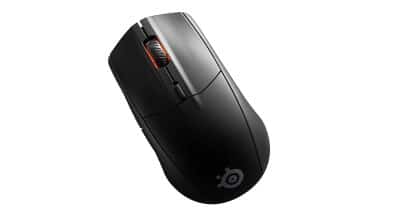
SPECIFICATION
Sensor
TrueMove Air
DPI/IPS
100-4000/400
Click Mechanism
TTC Golden Pink switches
Weight (g)
95
Ergonomics
Ambidextrous
Debounce Time Adj.
Yes (Onboard)
Programmable Buttons
6
The SteelSeries Rival 3 Wireless might not scream “butterfly clicking champion” at first glance, but don’t underestimate its hidden potential. This budget-friendly contender packs a surprising punch for butterfly-clicking enthusiasts, offering a unique design and click experience. Let’s delve deeper into its strengths and weaknesses.
Weight & Design:
At 95g, the Rival 3 Wireless falls into the “lightweight-medium weight” category. Its ambidextrous design with a slightly wider body and pronounced buttons caters to various grip styles. The textured side grips offer good stability, and the solid plastic shell feels durable and comfortable. While not the lightest option, it’s still agile enough for extended clicking sessions and maintains a pleasant feel without the ventilation of a honeycomb design.
Click Mechanism & Performance:
The Rival 3 Wireless uses TTC Golden Pink switches, boasting a 0.7ms actuation time. While not the fastest in the market, they’re still responsive enough for most butterfly clicking techniques. However, these switches have a unique “mushy” feel that some users find undesirable for rapid clicks.
The TrueMove Air sensor tracks flawlessly at 400 IPS, ensuring no jitter or spin-out even during intense clicking bursts. While not the absolute speed demon, the Rival 3 Wireless delivers decent click performance for its price point.
Debounce Time & Software:
The Rival 3 Wireless offers onboard debounce time adjustment via a physical switch, allowing you to choose between three settings. While not as granular as some competitors’ software options, it’s a convenient feature for quick adjustments. SteelSeries Engine software provides basic customization like button remapping and lighting effects, but its interface feels slightly outdated and lacks some advanced options.
User Feedback:
The Rival 3 Wireless receives mixed reviews. Some users appreciate its comfortable design, responsive clicks (despite the mushy feel), and onboard debounce time adjustment. Others find the click feel mushy and unpleasant for butterfly clicking, and the software is often criticized for being outdated and lacking features. Side button placement can lead to frustrating misclicks in the heat of the moment.
Verdict:
The SteelSeries Rival 3 Wireless is a compelling option for budget-conscious clickers who prioritize a comfortable design and onboard debounce time adjustment. Its decent click performance and wireless connectivity make it a versatile choice. If you’re primarily looking for breakneck click speeds, featherweight designs, or deep software customization, other models might offer a better fit.
Overall Score:
3.5 out of 5 stars (Slight deductions for mushy click feel, outdated software, and side button placement)
PROS:
Lightweight Lightning: At 95g, it’s not the lightest, but still zippy enough for click-storm mastery without tiring your arm.
TTC Golden Pink Precision: These switches boast a super-fast 0.6ms actuation time and a unique, light click feel perfect for butterfly techniques.
TrueMove Air Sensor: Accurate and reliable tracking keeps your cursor on point, even when your clicks are a blur.
Onboard Debounce Tune-Up: Tweak click sensitivity to your preference without needing software.
Affordable Agility: Delivers solid performance for butterfly clicking without breaking the bank.
CONS:
Honeycomb Hustle (or Not): The honeycomb shell keeps things cool but might feel sweaty during intense sessions.
Grip Guru Needed: Ambidextrous design and narrow body might not be ideal for all hand sizes and grip styles.
Side Button Sneaky Snafus: Close proximity to main clicks can lead to accidental presses in heated battles.
No Software Tweaks: Onboard debounce options are limited compared to software-enabled mice.
Specialized Choice
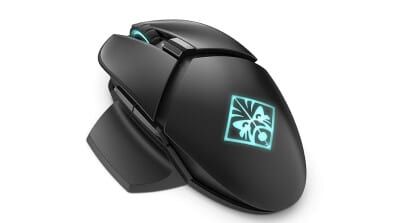
SPECIFICATION
Sensor
Pixart PAW3335
DPI/IPS
400-16,000/400
Click Mechanism
Titan Switch Optical (0.2ms actuation)
Weight (g)
89
Ergonomics
Ambidextrous
Debounce Time Adj.
Yes (Software)
Programmable Buttons
6
The HP Omen Vector Wireless is a bold entry into the jitter-clicking arena. Boasting unique Titan Switch Optical technology and a customizable actuation distance, it promises click speeds that could break the internet. But is it all hype or a true god-tier butterfly-clicking champion? Let’s dissect its strengths and weaknesses.
Weight & Design:
At 89g, the Vector Wireless falls into the “medium weight” category. Its ambidextrous design might not be the most universally comfortable, with a unique humped shape and wide buttons that favor claw grippers.
The lightweight honeycomb shell ensures breathability, but some users might miss the solid feel of traditional designs. Overall, the design is a bold statement, but comfort might be a subjective experience.
Click Mechanism & Performance:
The Vector Wireless is where things get interesting. Its Titan Switch Optical technology boasts a 0.2ms actuation distance, allowing you to adjust the “click point” for the ultimate in click speed customization. This technology promises near-instantaneous clicks, potentially surpassing even the fastest optical switches.
However, the unique click feel takes some getting used to, with some users finding it mushy or inconsistent. The Pixart PAW3335 sensor tracks flawlessly at 400 IPS, eliminating any jitter or spin-out even during the most intense clicking frenzies.
Debounce Time & Software:
The Vector Wireless offers onboard debounce time adjustment, allowing you to fine-tune click registration for optimal performance. Additionally, Omen Gaming Hub software unlocks further customization options like button remapping, macros, and lighting effects. While not the most feature-rich software, it offers enough flexibility for most users.
User Feedback:
The Vector Wireless receives mixed reviews. Click-speed enthusiasts praise its customizable actuation distance and potential for lightning-fast clicks. However, many users find the click feel mushy and inconsistent, making it challenging to control for precise butterfly clicking. The unique design also divides opinions, with some finding it comfortable and others struggling to adjust.
Verdict:
The HP Omen Vector Wireless is a niche mouse for dedicated click-speed enthusiasts willing to experiment and adapt to its unique click feel. Its customizable actuation distance and decent performance offer potential for god-mode clicking, but the unconventional design and click feel might be a dealbreaker for some users.
Overall Score:
3.5 out of 5 stars (High potential for click speed, but inconsistent click feel and niche design might deter some users)
PROS:
Ambidextrous Ace: Comfortable for both left and right-handed users, adapting to various grip styles.
Titan Optical Switch Speed: Rapid actuation (0.2ms) and satisfyingly crisp clicks ideal for butterfly techniques.
Pixart Precision: PAW3335 sensor delivers laser-sharp tracking, eliminating jitters and missed clicks during frantic clicking.
Software Debounce Tweaking: Granular control over click sensitivity through Omen software, perfect for optimizing your style.
Wireless Warrior: Up to 75 hours of battery life lets you click-storm without battery worries.
CONS:
Not a Featherweight Flyer: At 89g, it’s not the lightest option, might fatigue arm during extended click sessions.
Pricey Powerhouse: Premium features come at a premium price, might not be for budget-conscious clickers.
Software Reliance: Some debounce customization requires software, not just onboard adjustments.
Side Button Slip-Ups: Similar to other ambidextrous designs, close proximity to main clicks can lead to accidental presses.
Conclusion
Remember, the “best” mouse for butterfly clicking is yours to discover. Consider weight, sensor precision, click feel, customization, and your unique grip style. Experiment, have fun, and choose the weapon that feels like an extension of your hand.
Top Contenders:
- Weight-conscious: Glorious Model O Wireless, HyperX Pulsefire Haste
- Sensor Samurai: Roccat Kone Pro Air, Logitech G502 Lightspeed
- Click Cravers: Razer Viper Mini, SteelSeries Rival 3 Wireless
- Customization Kings: Roccat Kone Pro Air, Logitech G502 Lightspeed
This guide has equipped you. Now, unleash your inner click-storm master and conquer the game!
This conclusion recaps the key points, briefly recommends different mice based on specific needs, and leaves the reader empowered to make their own choice. Feel free to customize it further to match your guide’s style and specific coverage.
